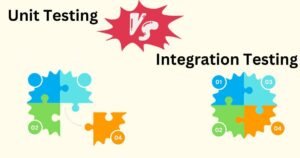In the world of software development, working with databases is a common and essential task. Developers need a way to interact with databases efficiently and without the complexities of traditional database programming. Spring Boot Data JPA is a powerful tool that simplifies database operations and makes database access a breeze. In this article, we’ll introduce you to Spring Boot Data JPA, explaining what it is and how it can simplify database operations in your Java applications.
What is Spring Boot Data JPA?
Spring Boot Data JPA is a part of the larger Spring Data project, which simplifies database access in Spring applications. JPA stands for Java Persistence API, and it is a standard specification for accessing, managing, and persisting data between Java objects and a relational database. Spring Boot Data JPA combines the power of the Spring framework with the simplicity and ease of JPA to create a robust and efficient way to work with databases.
Key Features of Spring Boot Data JPA
Spring Boot Data JPA offers several key features that make it a valuable tool for developers:
- 1. Automatic CRUD Operations: Spring Boot Data JPA automatically generates CRUD (Create, Read, Update, Delete) repository methods for your data model. This means you don’t have to write boilerplate code for basic database operations.
- 2. Query Methods: You can define custom query methods in your repository interface by simply declaring their method signature. Spring Data JPA will automatically create the SQL queries based on your method names.
- 3. Pagination and Sorting: Spring Boot Data JPA provides built-in support for paginating and sorting query results, making it easy to handle large datasets.
- 4. Derived Queries: You can derive query methods from the method names, which reduces the need for writing custom SQL queries.
- 5. Custom Repositories: If you have complex use cases, you can create custom repositories with your own methods and queries.
- 6. Auditing: Spring Boot Data JPA includes auditing features to track and manage the creation and modification dates of your entities.
- 7. Integration with Other Spring Projects: Spring Boot Data JPA seamlessly integrates with other Spring projects like Spring Security, Spring MVC, and Spring Boot, making it a powerful choice for developing full-stack applications.
Getting Started with Spring Boot Data JPA
To start using Spring Boot Data JPA, you need to follow a few simple steps:
- 1. Create a Spring Boot Project: You can use Spring Initializr to generate a Spring Boot project with the necessary dependencies, including Spring Data JPA.
- 2. Define Entity Classes: Create your entity classes, which represent the objects you want to persist in the database. Annotate these classes with JPA annotations to define the mapping to database tables.
- 3. Create a Repository Interface: Define a repository interface that extends the
JpaRepositoryinterface. This interface will provide basic CRUD operations for your entity. - 4. Write Query Methods: If you need custom queries, declare query methods in your repository interface. Spring Data JPA will automatically generate the SQL queries for you.
- 5. Use the Repository: Inject your repository interface into your service or controller classes, and start using it to interact with the database.
Example Code
Here’s a simple example of using Spring Boot Data JPA to create a repository and perform basic database operations.
Performing CRUD Operations with Spring Boot Data JPA
Let’s continue with our example and see how easy it is to perform basic CRUD operations with Spring Boot Data JPA.
Creating a New Product
@Service
public class ProductService {
private final ProductRepository productRepository;
@Autowired
public ProductService(ProductRepository productRepository) {
this.productRepository = productRepository;
}
public Product createProduct(Product product) {
return productRepository.save(product);
}
}
In the ProductService class, we’ve injected the ProductRepository and implemented a method to create a new product. The save method from JpaRepository handles the database insertion.
Retrieving Products by Name
@Service
public class ProductService {
// ...
public List<Product> findProductsByName(String name) {
return productRepository.findByName(name);
}
}
Here, we’ve added a method to find products by name using the custom query method findByName declared in the ProductRepository.
@Service
public class ProductService {
// ...
public Product updateProduct(Product product) {
return productRepository.save(product);
}
}
The updateProduct method demonstrates how to update a product. By invoking the save method with an existing entity, you can perform an update.
Deleting a Product
@Service
public class ProductService {
// ...
public void deleteProduct(Long productId) {
productRepository.deleteById(productId);
}
}
To delete a product, we use the deleteById method provided by JpaRepository.
By following this pattern, you can easily implement the complete set of CRUD operations in your Spring Boot application. Spring Boot Data JPA handles the database interactions, allowing you to focus on your application’s business logic.
Conclusion
Spring Boot Data JPA simplifies database operations, making it an excellent choice for Java applications that require database access. With its automatic CRUD operations, query methods, and built-in support for pagination and sorting, developers can streamline the development process and save time. Whether you’re building a small web application or a large enterprise system, Spring Boot Data JPA can simplify database interactions and provide a powerful tool for working with databases in your Java applications. Start using Spring Boot Data JPA to simplify your database operations and improve the efficiency of your Java projects.






